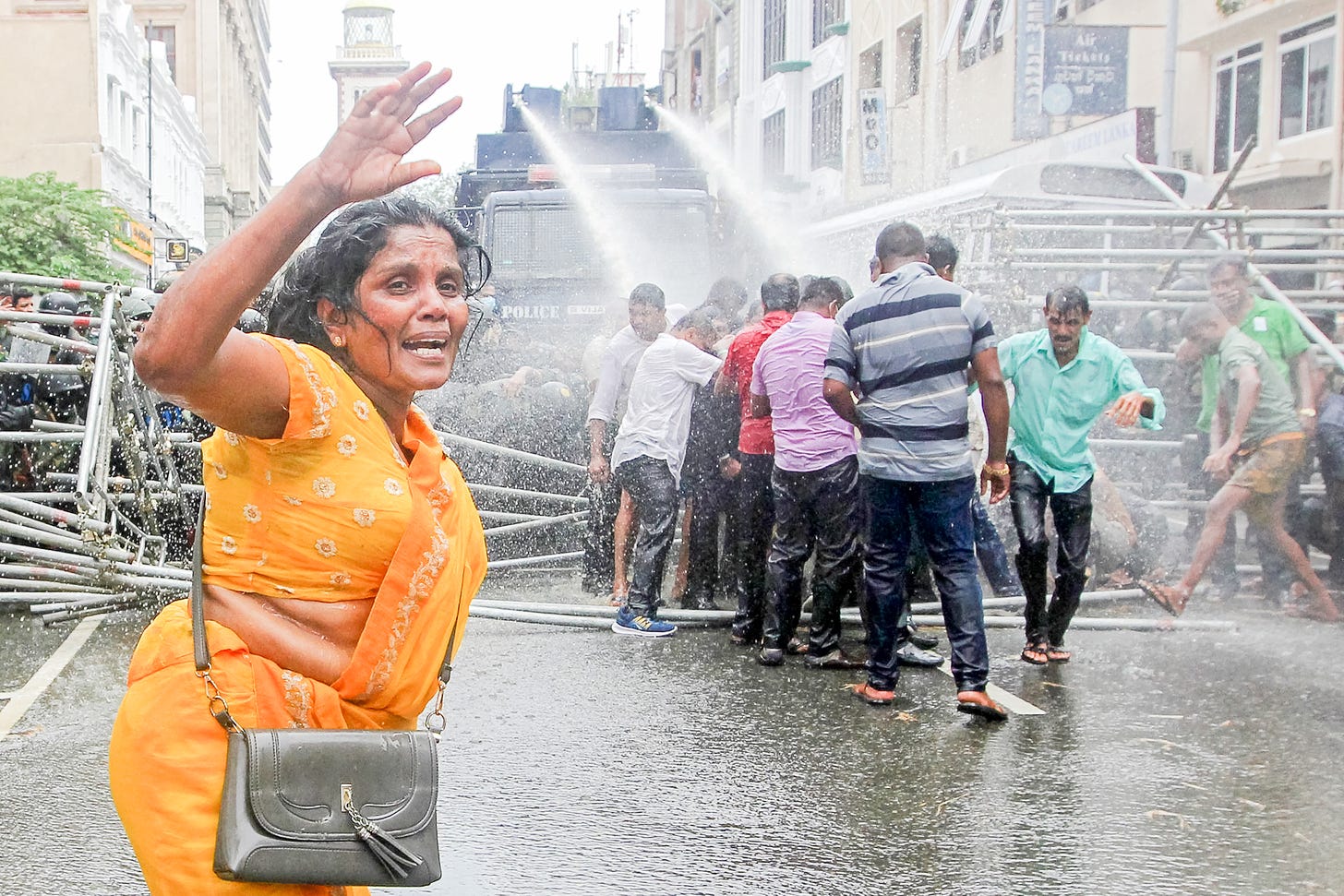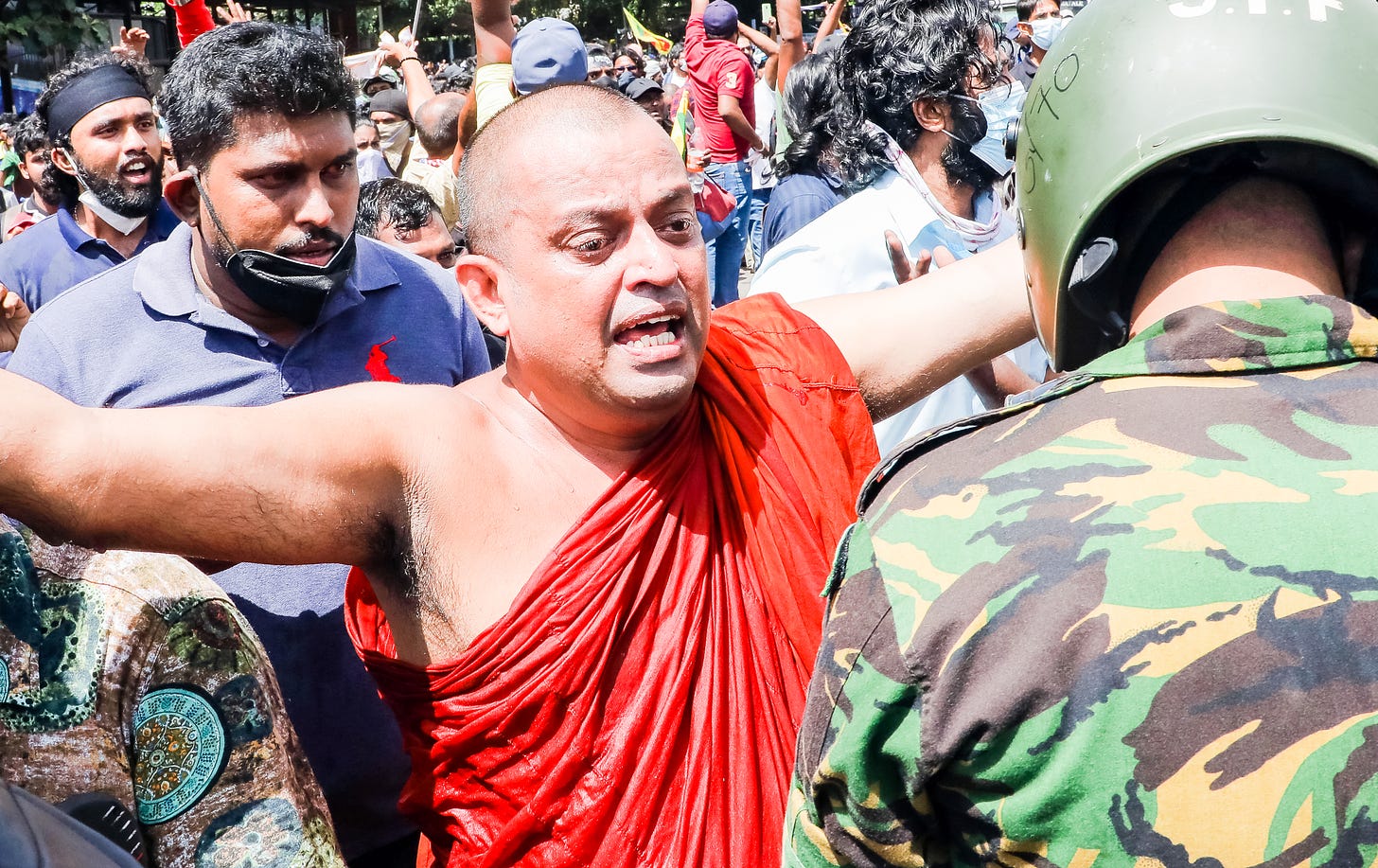SOURCE:
Green Dogma Behind Fall Of Sri Lanka (substack.com)
Organic farm advocates said they wanted what's best for the 22 million people of the island nation off the coast of India. What went wrong?
Sri Lanka has fallen. Protesters breached the official residences of Sri Lanka's Prime Minister and President, who have fled to undisclosed locations out of fear of death. The proximate reason is that the nation is bankrupt, suffering its worst financial crisis in decades. Millions are struggling to purchase food, medicine and fuel.
Energy shortages and inflation were major factors behind the crisis. Inflation in June in Sri Lanka was over 50%. Food prices rose by 80%. And a half-million people fell into poverty over the last year.
But the underlying reason for the fall of Sri Lanka is that its leaders fell under the spell of Western green elites peddling organic agriculture and “ESG,” which refers to investments made following supposedly higher Environmental, Social, and Governance criteria. Sri Lanka has a near-perfect ESG score (98) which is higher than Sweden (96) or the United States (51).
To be sure, there were other factors behind Sri Lanka’s fall. Covid lockdowns and a 2019 bombing hurt tourism, a $3 billion to 5 billion-per-year industry. Sri Lanka’s leaders insisted on paying China back for various “Belt and Road” infrastructure projects when other nations refused to do so. Sri Lanka racked up a huge foreign debt. Growth had been declining since 2012. And higher oil prices meant transportation prices rose 128% since May.
But the biggest and main problem causing Sri Lanka’s fall was its ban on chemical fertilizers in April 2021. Many other developing nations had to deal with similar challenges, including covid and high foreign debt, but have not collapsed. Indonesia has suffered terrorist bombings, which harmed tourism, but managed to rebound, and tourism rebounded in Sri Lanka starting last year. And while economic growth declined after 2012 but from astronomical peaks of 8% and 9% and remained above 3% and 4% until 2020.
The numbers are shocking. One-third of Sri Lanka’s farm lands were dormant in 2021 due to the fertilizer ban. Over 90% of Sri Lanka’s farmers had used chemical fertilizers before they were banned. After they were banned, an astonishing 85% experienced crop losses. The numbers are shocking. After the fertilizer ban, rice production fell 20% and prices skyrocketed 50 percent in just six months. Sri Lanka had to import $450 million worth of rice despite having been self-sufficient in the grain just months earlier. The price of carrots and tomatoes rose five-fold. While there are 2 million farmers in Sri Lanka, 70% of the nation’s 22 million people are directly or indirectly dependent on farming.
Things were worse for smaller farmers. In the Rajanganaya region, where the majority farmers operate just a hectare (2.5 acres), families reported 50% to 60% reductions in crop harvest. “Before the ban, this was one of the biggest markets in the country, with tonnes and tonnes of rice and vegetables,” said one farmer earlier this year. “But after the ban, it became almost zero. If you talk to the rice mills, they don’t have any stock because people’s harvest dropped so much. The income of this whole community has dropped to an extremely low level.”
But the damage to tea was the key to Sri Lanka’s financial failure. Tea production had generated $1.3 billion in exports annually. Tea exports paid for 71% of the nation’s food imports before 2021. Then, tea production and exports crashed 18% between November 2021 and February 2022, reaching their lowest level in 23 years. The government’s devastating ban on fertilizer thus destroyed the ability of Sri Lanka to pay for food, fuel, and service its debt.
The crisis accelerated from that moment forward. At the end of August 2021, President Gotabaya Rajapaksa declared a state of emergency and two months later tried to reverse course. But it was too late. “We don’t have enough chemical fertilizers,” Rajapaksa said, “because we didn’t import them. There is a shortage.” In May 2022, Sri Lanka failed to pay $77 million on its foreign debt repayments. It seems like a small amount but the default made it hard for Sri Lanka to borrow money, and so it devalued its currency, inflation rose 30%, and the government ran out of the cash it needed to import fuel, food, and medicines.
What, exactly, were Rajapaksa and other Sri Lankan leaders thinking? Why did they engage in such a radical experiment?

